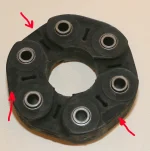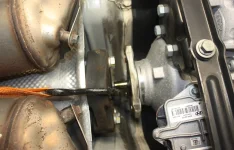ntmehan
Registered Member
- Joined
- Jun 4, 2019
- Messages
- 79
- Reaction score
- 30
- Points
- 18
- Genesis Model Type
- 2G Genesis Sedan (2015-2016)
This is so obvious now that we're talking about it. BMW has issues (maybe that's the wrong word, my BMW tech buddy is constantly replacing them on older cars, so they're just a wear item) with their flex disc (guibo, in BMW terminology) but the difference is that they sell it as a seperate part. That part can range from ~$45-200, but even at the high end that's nowhere near the cost to buy an entire driveshaft assembly! I would accept replacing a flex disc at my mileage even (58,000) for a car of the weight and power of my 5.0, so that's where the problem is. It's not necessarily bad design, it's just the inability to replace an inexpensive wear item (which is in no way compromised separate from the assembly) and instead having to shell out to replace the entire assembly 90% of which is just fine. Does anyone know if there are any aftermarket options? Looks like this would be a very simple DIY for anyone with a torque wrench, right, as long as you can get the flex disc for a reasonable price by itself? I would pony up $50 bucks to buy something and give it a shot... And hell, even if it only lasts 3 years/45000ish miles, I'd replace it again at $100k for the price of a damn oil change...










